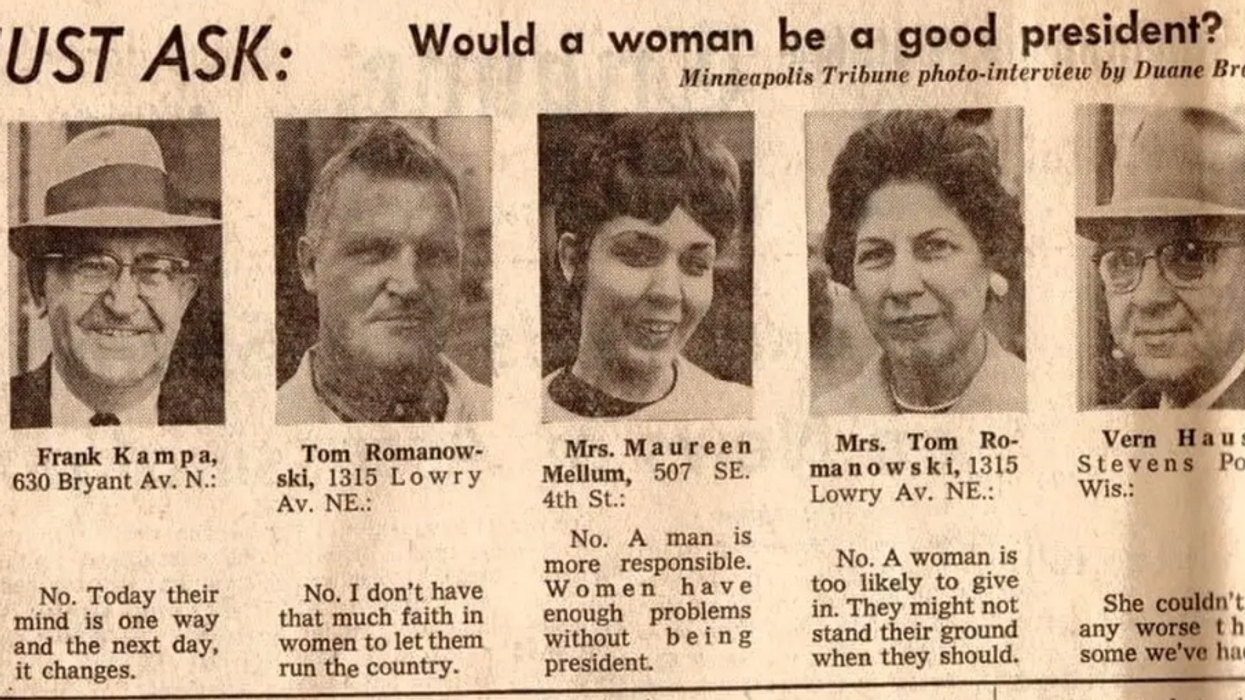Back when she was 23, Tiffany Gaines tried to buy condoms over the counter at a convenience store in New York City. She distinctly remembers how uncomfortable she felt. “It was this awkward and shameful experience, and I felt humiliated,” as the clerk used an eight-foot orange claw to pick up the condoms in front of a group of men buying beer on a Saturday night.
It was 2012, and at the time, she was a graduate student in design for social innovation at the School of Visual Arts. Gaines saw an opportunity to take what could feel like a distressing experience and turn it into making purchasing condoms empowering and fun.
In 2014, Lovability Inc. was born, and Gaines found herself running and operating a company aimed at promoting feminism through every condom purchase. But she never could have predicted the current state of affairs, with reproductive rights at risk and employers no longer covering birth control pills. As the Trump administration continually undermines women, people are taking their sexual health into their own hands more than ever before. And that puts women-owned condom companies in a rather enviable position.
[quote position="left" is_quote="true"]The name Trojan, it’s extremely aggressive. It’s the story of the Trojan horse sneaking its way into an impenetrable city and ravaging it.[/quote]
Gaines is one of many women bringing a different perspective to the condom industry. Talia Frenkel founded L. Condoms (which partners with organizations in Sub-Saharan Africa) in 2011 after working as a photojournalist for Red Cross and United Nations. It was during her time chronicling the AIDS and HIV crisis affecting young girls that she saw an opportunity to make a difference. “I hadn’t realized that 90% of countries in Sub-Saharan Africa go through condom stock-outs and this was really undermining the efforts of organizations on the ground working to promote awareness and usage of condoms,” she says. “There was a lot of talk about girls being our greatest impact resource and future agents of change in development, but at the end of the day, it was easier to raise funds for business micro-loans and more difficult to talk about those same girls becoming sexually active.”
Then, in 2014, Meika Hollender teamed up with her father, the co-founder of Seventh Generation, and established Sustain, a non-GMO condom company. It was the lack of eco-friendly condoms “that sort of drove us in a certain direction when we started Sustain,” Hollender says. “Coming from the background of Seventh Generation, we thought it was crazy that when it came to the most intimate parts of our bodies and what went inside women’s vaginas, there weren’t many natural options. So we saw a huge opportunity there.”
With over 450 million condoms sold in the United States alone each year, there certainly does appear to be a market, particularly with women. But two companies currently dominate the condom space in the U.S.: Trojan, which makes up 69% of condoms purchased, and Durex, which sells 15%. The other 16% is made of smaller companies like Lovability, Sustain, and L.
Statistically, women are less likely to carry condoms or even use them. The National Survey of Sexual Health and Behavior found heterosexual men consistently use condoms at a higher rate than straight women when it comes to vaginal intercourse.
While compiling research when starting Sustain, Hollender found that 40% of condoms are purchased by women; however, Hollender also learned “that only 21% of single sexually active women use condoms regularly; 48% of pregnancies are unplanned; and 1 in 4 college freshmen contract an STI in college during her first year of school. These statistics mixed with the reality that I knew about how women feel buying condoms sort of triggered this idea and journey of building Sustain to help break the stigma of buying and carrying condoms and helping empower women to feel good about making a responsible choice.”
Why are women reluctant to buy or use condoms? Frenkel described Trojan’s hypermasculinity in their products as one example, “The name Trojan, it’s extremely aggressive. It’s the story of the Trojan horse sneaking its way into an impenetrable city and ravaging it.” Gaines added, “So many condoms are associated with hypersexuality, dominance, and masculinity, so what we’re doing [as companies] is taking condoms out of that context and redefining them as a symbol of self-love.”
And women-owned condom companies seem to be targeting women successfully. Richelle Schilling, 30, started carrying condoms consistently in the last year and has purchased her condoms through Lovability’s website. Despite taking control of her sexual health, she is aware of the stigma attached to a woman carrying her own condoms. “It seems to be viewed that if a woman is carrying a condom, she is easy to get into bed.”
Now that she has an option to support a woman-owned company with women in mind, Schilling feels more comfortable purchasing condoms. “When purchasing from a condom company that is marketed toward women, it is a reminder that women are taking control of their [sexual] lives. With the stigmas out there, it’s a reminder that other women are staying protected, enjoying their sex lives, and supporting other women,” she says.
Ariel Stallings, a publisher and author, found herself in a strange position after divorcing her husband of 18 years. When she started dating again, the thought of buying condoms felt strange and elusive. “I don’t feel a sense of shame for carrying them though,” she says, but “the idea of carrying a condom in cute packaging is appealing to me because I’m a sucker for cute packaging.”
Outside of the cute factor, however, Stallings believes there’s a benefit in creating condoms that directly focus on women. “I like to think of harm reduction. While it’s ideal for women to not feel shame for having a condom fall out of their bag because it shouldn’t be a big deal, these products are good to have available to them since we’re not in an age yet where women don’t feel shame.”
The packaging for Lovability, Sustain, and L. all have different aesthetics. Lovability’s condoms are playful and fun, coming in tin cans with sayings written on them like, “Talk Feminist to Me” or “Babe with the Power.” Lovability started the theme of the company centered around discretion and being able to hide the fact one was carrying condoms. “Now it’s much more about being proud about being a person that takes responsibility of your sexual health,” Gaines says, adding, “condoms are a very bold statement of believing in gender equality because, if you have a condom, all of a sudden you are decreasing the amount of risk from it being totally on the man to carry a condom.”
Sustain also recently rebranded itself, moving away from being too discreet. “Initially, we didn’t think about the fact that as a brand we should be really straightforward because we are bold and we aren’t trying to hide who we are. If you make it too discreet, you’re kind of buying into that idea that you should not feel comfortable that someone sees you buying condoms,” Hollender says.
Frenkel always had a sleek design in mind for her brand. “I’ll get invited to speak at this women’s event in Silicon Valley, and all I’ll see is pink and purple and stuff that’s super flowery,” she says. “I think that it’s funny because I think women are drawn to things that are clean and modern, and that’s why we went for a black and white box.”
For Olivia Gunther, a sexuality researcher at the University of Michigan, marketing condoms specifically toward women will only further stigmatize women carrying and buying condoms.
Gunther pointed to Trojan’s latest XOXO condom, which is made to look discreet and feminine. “Condom companies that do target women need to be careful with how they market their gender-defined packaging. [For example,] the XOXO box looks very feminine and is clearly supposed to comfort the typical woman who wants to purchase safer sex products. It tries to normalize the product for her by assuming that it will appeal to her feminine interests and style.” According to Gunther, this is problematic because it assumes that women do not own their sexualities in public, or in general.
“Marketing towards women needs to align itself mores with including them in the conversation about sexual health and the importance of using barrier methods when engaging in sexual activity, instead of shaming them into buying condom boxes that don't even look like condom boxes,” Gunther says.
At Gunther’s university, she has observed a shift since the election. “I've noticed an uptick in my friends and other students at my university purchasing condoms more frequently. With the risk that hormonal contraceptives may not be covered or harder to access in the future, it's imperative that women who aren't planning on becoming pregnant in the next few years consider what their options may be.”
For Lovability, Sustain, and L., their aim is to not only help women take charge of their sexual health, but also promote philanthropic causes that support women’s rights that feel under siege. Which is another reason women are attracted to them over other more mainstream brands.
Sustain gives 10% of its proceeds to women’s health care organizations, which has resonated with more of their customers since the election. “Before the election, we received negative feedback on where people would say ‘I love your brand, but can’t support your because [Sustain] supports Planned Parenthood,’” Hollender says. “But since November, we haven’t received one of those emails.”
With every purchase of an L. condom, one is donated to a female entrepreneur in a developing country. “When I started this I wanted to make sure our condoms didn’t sit in a warehouse when we donated them and that we took a more holistic approach. These nonprofit program officers are able to pinpoint women in high impact areas, such as unplanned pregnancies or high HIV contraction rates and work with them and train them,” Frenkel says. “Then they go door to door and sell it at low market costs. That makes it a lot more likely that the product will be used. There have been reports that if you sell a mosquito net for pennies, it’s much more likely to be used than if you give it for free. You can also see that with condoms.”
[quote position="full" is_quote="true"]I’ll get invited to speak at this women’s event in Silicon Valley, and all I’ll see is pink and purple and stuff that’s super flowery. I think that it’s funny because I think women are drawn to things that are clean and modern.[/quote]
Lovability donates a condom to Planned Parenthood with every purchase and also employs physically and mentally disabled people from ARC San Diego to assemble their condom tins. Meanwhile, L. Condoms is putting fewer chemicals in the condoms themselves. “The World Health Organization does not recommend spermicide in condoms,” Frenkel says.
Research does appear to be leaning in this direction. Dr. Ann Duerr, HIV chief in the reproductive health division at the U.S. Centers for Disease Control and Prevention told ABC News, “For sexually transmitted disease prevention, our recommendation has been to use condoms with or without nonoxynol-9. Now it’s clear that N-9 does not add protection and may be harmful.” For Frenkel, this is troublesome. “The fact that there are condoms sold with spermicide still on shelves is pretty alarming.”
Each of these companies’ condoms are free of chemical irritants, dyes, fragrances, and spermicides. As a result, the women using these condoms are experiencing less discomfort. “A lot of these chemicals are on the shelf-condom brands … that can really irritate the vaginal wall. So I think it’s not only empowering to have condoms made with women in mind, but to have control of what’s going inside your body,” Gaines says.
“We get really positive feedback from women because they’re the ones most affected by chemicals in condoms,” Hollender says. As of now, 70% of the condom purchases from Sustain are made by women.
The FDA does not require condom companies to list their ingredients, which can be nerve-racking for those who are particularly sensitive to certain chemicals or ingredients. “There’s really no way for consumers to know what’s in their products other than the companies themselves electing to tell all the ingredients,” Hollender says, adding that Sustain lists all their ingredients online and on the box. She hopes this encourages consumers to demand other companies to also have a level of transparency.
“If you look at all the messages we receive about sex, generally most of this information started in a room of men discussing how things should be taught and it’s told from their worldview,” says Gaines. “And I think there’s an opportunity for women to really rewrite the script around what it means to practice safe [sex] and what it means to be sexually healthy and have sexual wellness.”
Women may not have overthrown the major condom brands just yet, let alone the political and cultural systems that deem their sexual health a low priority. But as they start making big money in an industry that’s long been the domain of men, tucking a condom into one’s purse feels less like a backup option and more of a radical act.
















 Robin Williams performs for military men and women as part of a United Service Organization (USO) show on board Camp Phoenix in December 2007
Robin Williams performs for military men and women as part of a United Service Organization (USO) show on board Camp Phoenix in December 2007 Gif of Robin Williams via
Gif of Robin Williams via 
 A woman conducts a online color testCanva
A woman conducts a online color testCanva A selection of color swatchesCanva
A selection of color swatchesCanva A young boy takes a color examCanva
A young boy takes a color examCanva 

 Pictured: A healthy practice?
Pictured: A healthy practice?


 Is solo sleep the best sleep?
Is solo sleep the best sleep?  Some poeple want their space, and some can't imagine being that seperate.
Some poeple want their space, and some can't imagine being that seperate. 